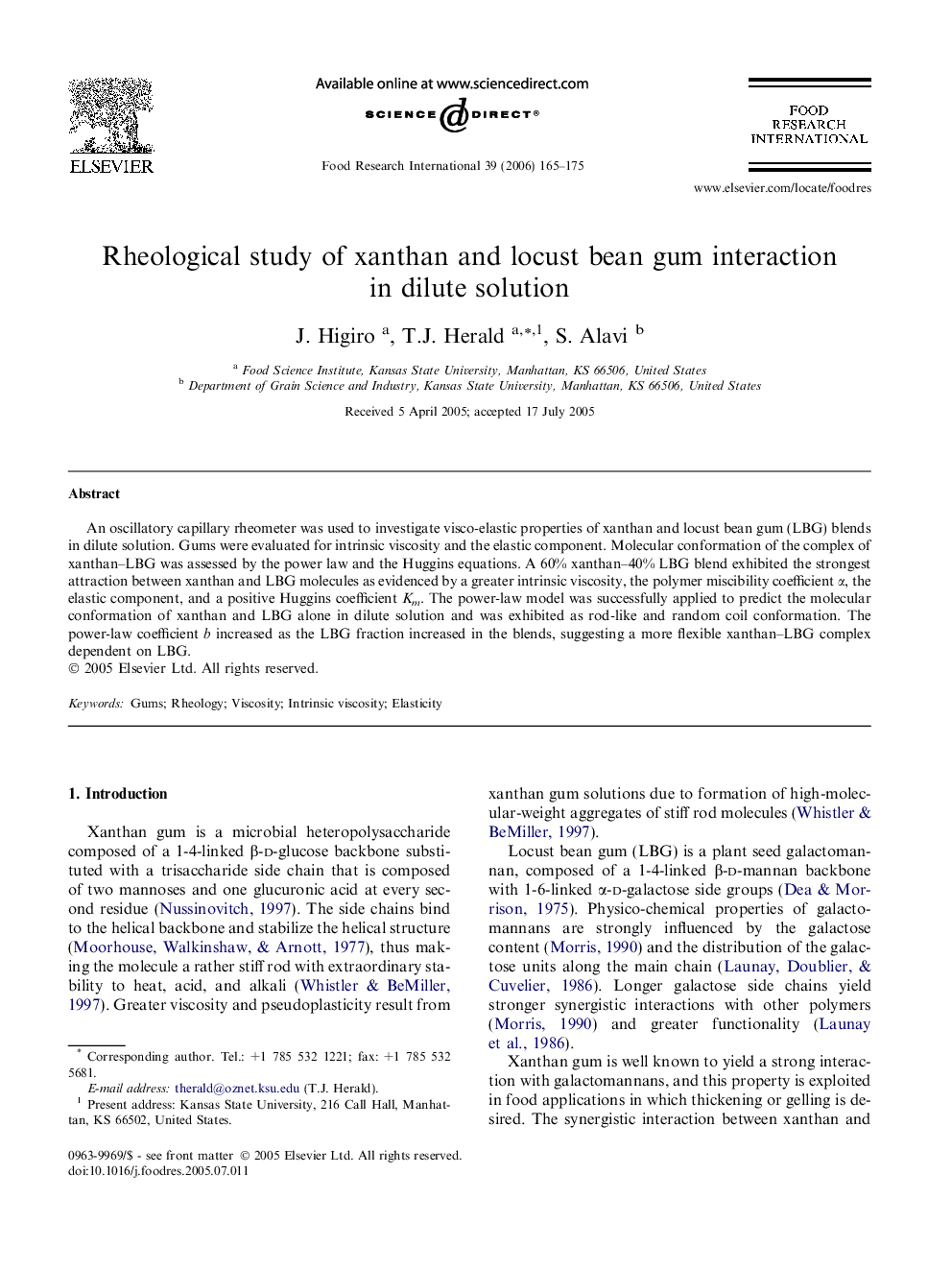| Article ID | Journal | Published Year | Pages | File Type |
|---|---|---|---|---|
| 4563167 | Food Research International | 2006 | 11 Pages |
An oscillatory capillary rheometer was used to investigate visco-elastic properties of xanthan and locust bean gum (LBG) blends in dilute solution. Gums were evaluated for intrinsic viscosity and the elastic component. Molecular conformation of the complex of xanthan–LBG was assessed by the power law and the Huggins equations. A 60% xanthan–40% LBG blend exhibited the strongest attraction between xanthan and LBG molecules as evidenced by a greater intrinsic viscosity, the polymer miscibility coefficient α, the elastic component, and a positive Huggins coefficient Km. The power-law model was successfully applied to predict the molecular conformation of xanthan and LBG alone in dilute solution and was exhibited as rod-like and random coil conformation. The power-law coefficient b increased as the LBG fraction increased in the blends, suggesting a more flexible xanthan–LBG complex dependent on LBG.
